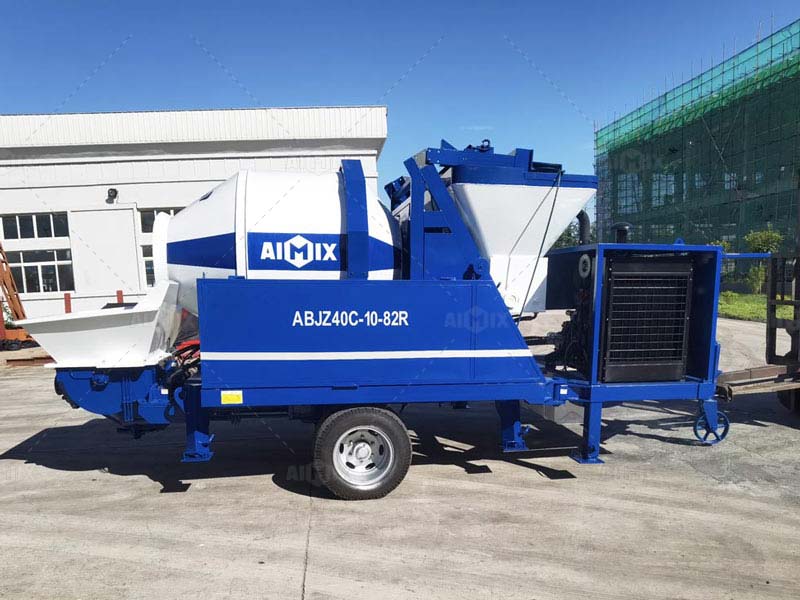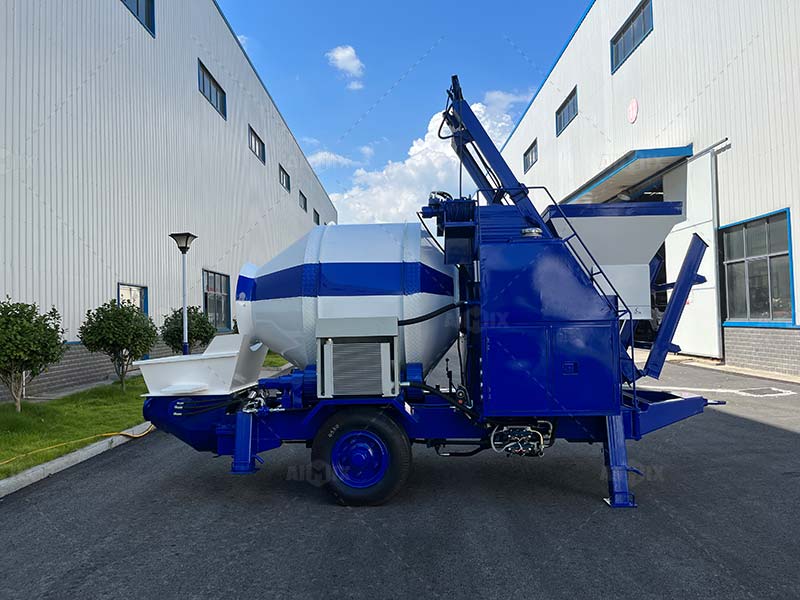Choosing the right equipment for concrete mixing and pouring is crucial for the success of any construction project. Two popular choices are the concrete mixer with pump and the standalone mixer. Each option has its unique advantages and is suited to different types of projects. This comprehensive comparison will help you understand the key differences, benefits, and potential drawbacks of each, enabling you to make an informed decision for your next project.
Functionality and Efficiency
Concrete Mixer with Pump
A concrete mixer with a pump combines the functions of a mixer and a pump into a single machine. This integration provides several benefits. Firstly, it significantly increases the efficiency of concrete mixing and pouring. The mixed concrete can be pumped directly to the desired location, reducing the need for multiple pieces of equipment and labor. This streamlined process not only saves time but also minimizes the risk of concrete setting prematurely, ensuring a higher quality pour.
Moreover, the mobility of concrete mixers with pumps makes them ideal for projects with complex layouts or difficult-to-reach areas. The concrete mixer pumps can easily navigate through a construction site, delivering concrete precisely where it’s needed, thus enhancing overall productivity.
Standalone Mixer
Standalone mixers are dedicated machines solely for mixing concrete. They come in various sizes, from small portable units to large industrial mixers. While they lack the integrated pumping capability of concrete mixers with pumps, standalone mixers excel in situations where large volumes of concrete need to be prepared and then transported separately.
One of the main advantages of standalone mixers is their simplicity and ease of maintenance. Since they focus solely on mixing, there are fewer mechanical components to manage, resulting in lower maintenance costs and easier troubleshooting. Additionally, standalone mixers are often more cost-effective upfront, making them a viable option for smaller projects or budget-conscious contractors.

Application and Versatility
Concrete Mixer with Pump
Concrete mixers with pumps are highly versatile and can be used in a wide range of applications. They are particularly beneficial for high-rise construction, bridge building, and tunnel construction, where transporting concrete vertically or over long distances is essential.
The ability to pump concrete directly to the pouring site reduces the need for additional equipment like cranes or hoists, simplifying logistics and reducing project costs. The portable concrete pumps are also well-suited for projects requiring continuous concrete pours, such as foundations and large slabs. The continuous mixing and pumping capability ensure a consistent flow of concrete, which is crucial for maintaining the structural integrity of large pours.
Standalone Mixer
Standalone mixers are more suited to projects where flexibility and mobility are less critical. They are commonly used in residential construction, roadwork, and small-scale commercial projects. In these scenarios, the concrete is mixed on-site and then transported to the pouring location using wheelbarrows, buckets, or separate pumping equipment.
While standalone mixers may not offer the same level of efficiency as mixers with pumps, they provide the flexibility to mix concrete at a controlled pace. This can be advantageous in projects where precision and control over the mixing process are prioritized, such as in decorative concrete work or when working with specialized concrete mixes.

Cost and Investment
Concrete Mixer with Pump
Investing in a concrete mixer with a pump typically involves higher upfront costs compared to standalone mixers. However, the potential savings in labor, time, and additional equipment can offset this initial investment. For large-scale projects or contractors who frequently work on complex sites, the enhanced efficiency and versatility can lead to significant cost savings over time.
Additionally, the reduced need for manual labor and the ability to complete projects faster can improve overall profitability. The long-term benefits of owning a concrete mixer with a pump make it a wise investment for contractors aiming for higher productivity and operational efficiency. You can get best mixer pump price here: https://aimixconcretesolution.com/concrete-mixer-with-pump/price/.
Standalone Mixer
Standalone mixers are generally more affordable initially, making them an attractive option for small to medium-sized projects or contractors with limited budgets. The simplicity of these machines also means lower ongoing maintenance costs, contributing to their cost-effectiveness.
However, it’s important to consider the potential hidden costs associated with standalone self loading concrete mixer. The need for additional labor, transportation, and pumping equipment can add up, particularly on larger projects. Therefore, while the initial investment is lower, the overall project costs may be higher when compared to using a concrete mixer with a pump.
In conclusion, the choice between a concrete mixer with a pump and a standalone mixer depends on the specific requirements of your project. Consider factors such as project size, budget, logistical challenges, and the desired level of efficiency to make the best decision for your construction needs.